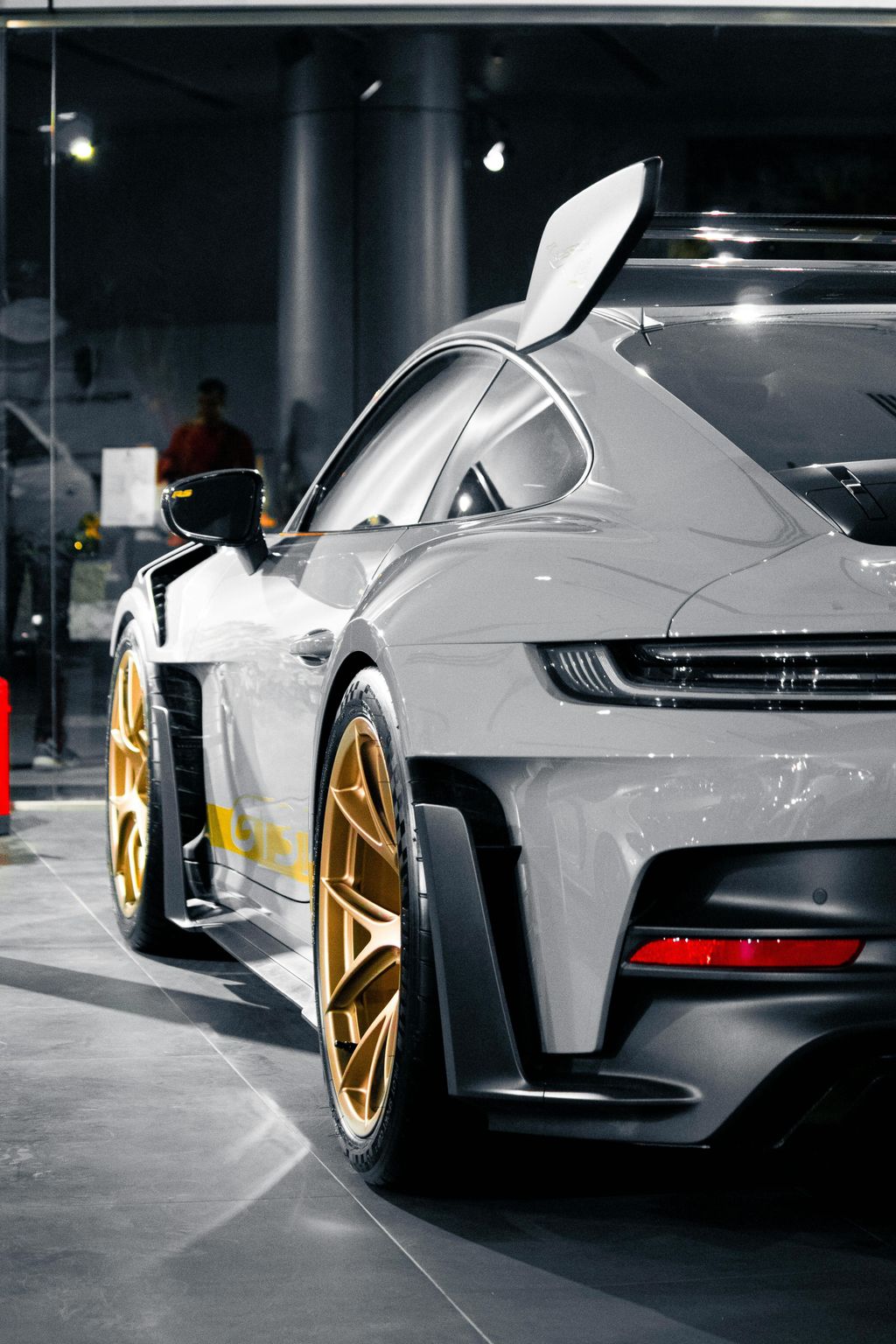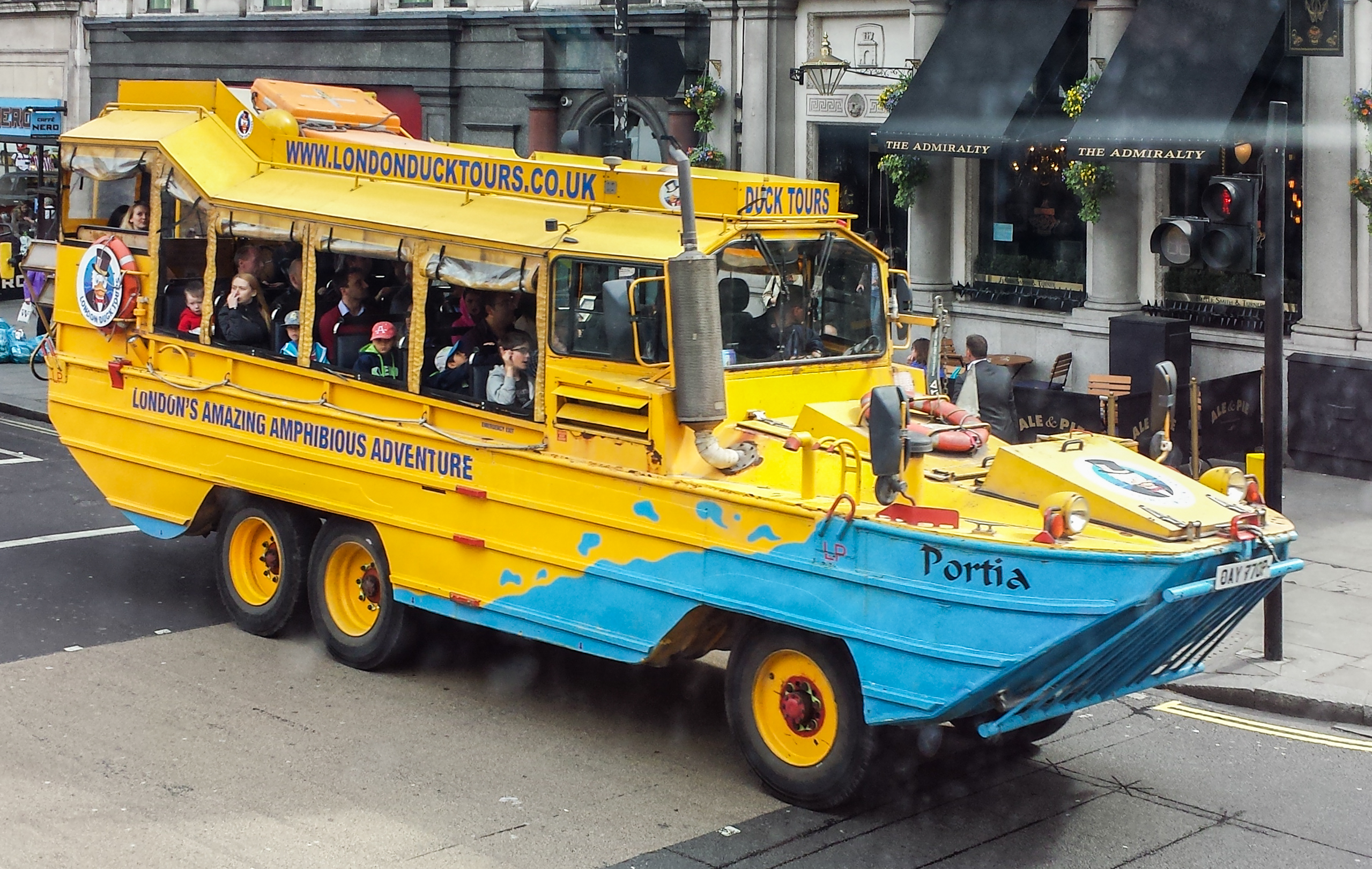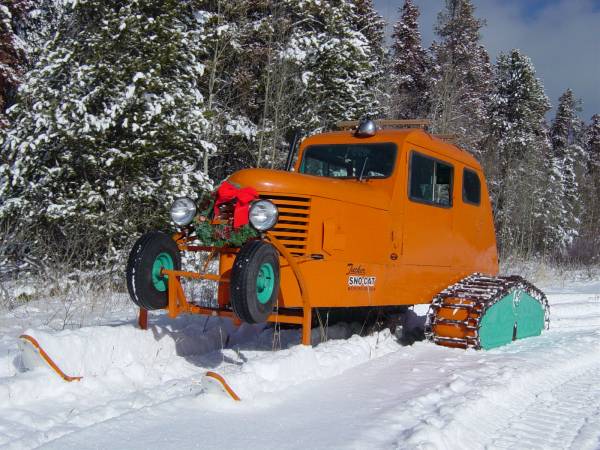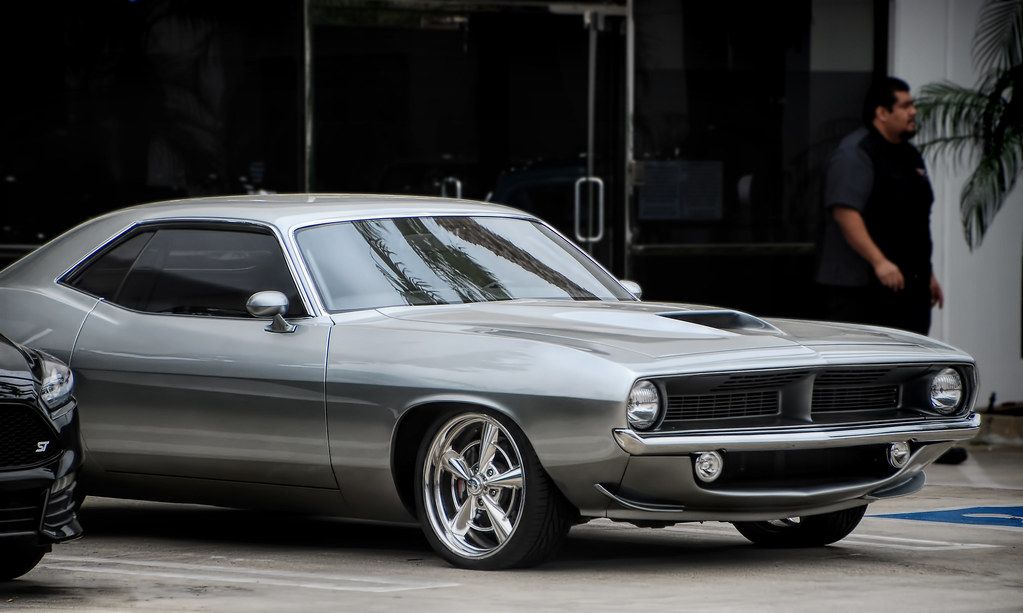
Most folks daydream about parking something cool in their driveway. Maybe a sleek sports car, perhaps a lifted F-350 that blocks out the sun. But what if your next ride came with tank tracks, a NATO serial number, or a Cold War backstory that smells faintly of diesel and trauma? No judgment here, we’ve all dreamed of owning a military vehicle since we were kids. It’s just one of those things that sticks with you, a primal urge to command something genuinely epic. And now that we’re adults, with a little cash and a lot of patience, that dream can technically come true!
Across the good ol’ U.S. of A., some of the strangest, boldest, and most uniquely collectible military vehicles are actually available to civilians. You don’t need to enlist or pull rank; you just need the patience, the right (often mind-numbing) paperwork, and probably a little extra garage space for something that might require its own zip code. Forget your conventional SUVs and crossovers; these machines are raw, unadulterated history on wheels, engineered for a purpose far more significant than school runs or grocery dashes.
We’re not talking about some bland, demilitarized pickup here, folks. We’ve skipped over anything common (sorry, Willys Jeep, you’re iconic but not *weird* enough for this list) and gone for the military vehicles that are truly rare, endlessly interesting, and just plain delightfully strange. These aren’t daily drivers, unless your daily commute involves traversing a small war zone or making everyone else on the road feel profoundly inadequate. These are driveway legends, rolling middle fingers to convention, and undeniable proof that some people just want to watch the world look on in confused awe. So buckle up, because we’re diving deep into the iron beasts and aluminum oddballs you can actually buy.
1. **M561 Gama Goat**Behold the M561 Gama Goat, a product of 1960s military ingenuity that looks like someone welded a pickup truck to a pontoon boat after a very late-night dare. This six-wheeled, two-piece contraption is infamous for its articulated chassis, meaning the front half rocks and rolls independently from the trailer-like rear. It maneuvers like a drunken slinky across badlands, beaches, and yes, your HOA president’s worst nightmares. If you’ve ever wanted to explain the concept of “pivot steering” to a crowd of bewildered onlookers, this is your vehicle.
The sheer absurdity of its design is what makes the Gama Goat so captivating. Developed to navigate the incredibly varied terrains encountered during the Vietnam War, its unique articulation allowed it to maintain ground contact with all six wheels, giving it unparalleled off-road capability for its era. It might look like something a mad scientist cooked up in their backyard, but every bizarre angle and hinge served a specific, critical function in getting troops and gear through utterly unforgiving environments. You’d be hard-pressed to find a more distinctive profile on any civilian road.
And here’s the kicker: it can also swim. Yes, swim. Owners joke that parallel parking is optional; just splash into the nearest canal and call it a day. While its aquatic capabilities might not be on par with a dedicated boat, the thought of cruising through a lake in a vehicle that resembles a land-based arthropod is pure, unadulterated cool. Imagine the looks you’d get pulling up to a boat ramp in one of these — you wouldn’t just launch a boat, you *are* the boat.
Getting one stateside is trickier than finding a clean 4.0L Jeep engine; most were chopped up or shipped overseas after their service, so the few survivors trade hands like outlaw baseball cards. Finding one intact is a testament to perseverance, often requiring a network of dedicated enthusiasts. But when you do, expect GoPro-wielding enthusiasts to hover like drones the second you unload it. A Gama Goat meetup? That’s basically Bigfoot riding a unicorn to a rave. Total production was around 15,274 units, but far fewer remain intact for civilian ownership, making each one a truly special, slightly insane acquisition.
2. **BRDM 2 Recon Scout**Picture a Cold War comic book villain’s getaway car: sleek armor, a turret that looks like it’s perpetually judging you, periscope eyes, and four hidden belly wheels that drop down to hop trenches like it’s playing a real-life video game. This is the BRDM-2, a Soviet-era amphibious armored scout car that first entered service in 1962. Most arrived here after Eastern Bloc fire sales, and each carries a whiff of secret agent drama you won’t rinse off, no matter how much Simple Green you use. It’s less a vehicle and more a statement: “I’m here, I’m vaguely menacing, and I probably have classified documents in my glove box.”
The BRDM-2’s design philosophy was all about versatility and reconnaissance. Its low profile made it difficult to spot, while its amphibious capabilities—driven by a water jet—allowed it to cross rivers and lakes with surprising ease. But it’s those auxiliary belly wheels that truly make it unique. These smaller, retractable wheels could be lowered to improve off-road traction and enable it to cross wide trenches, giving it an almost insect-like ability to overcome obstacles. It’s a mechanical ballet of tactical prowess, designed to keep Soviet scouts moving through any terrain, come hell or high water.
Owners love trolling Jeep trails, blasting “Back in the U.S.S.R.” while tourists assume a movie shoot is underway. The sheer presence of a BRDM-2 commands attention; it’s a tangible piece of history that looks like it just rolled off the set of a spy thriller. And let’s be honest, who wouldn’t want to make a dramatic entrance at the local hardware store in something that clearly means business? Just try to avoid parking it next to a civilian Hummer; the contrast is almost embarrassing for the latter.
The paperwork is heavier than the steel hull itself: demilitarization letters, import bonds, and probably a translator for the Cyrillic dash labels are all part of the charming ownership experience. Still, nothing else at Cars and Coffee sparks conversations in three languages at once. Park one at a suburban strip mall, and watch Instagram bloom with confused selfies. Cybertrucks will look like flimsy origami in its shadow — and only one of these is actually bulletproof. Over 7,200 were built, making them surprisingly available if you know where to look and have a lax import agent, but be prepared for a truly unique ownership journey.

3. **T 55 Tank (Demilitarized)**It’s not every day you shop for an ex-Warsaw Pact tank minus its cannon, but America is spacious, and eccentricity is celebrated. The T-55, a dominant Cold War battle tank introduced in 1958, is surprisingly available in demilitarized form. This isn’t just a vehicle; it’s a monumental hunk of steel, a symbol of an era, and quite possibly the ultimate flex for anyone with an expanse of land and a penchant for the truly outrageous. Forget a lifted truck; this is the vehicular equivalent of owning a small, very angry mountain.
The T-55 series was one of the most widely produced tanks in history, with over 50,000 units manufactured across its various iterations. Its design was rugged, reliable, and relatively simple, making it a formidable presence on countless battlefields around the globe. While civilian versions are, thankfully, stripped of their main armament, the sheer scale and raw power of the remaining chassis are still awe-inspiring. You’re not just buying a machine; you’re acquiring a piece of engineering that shaped geopolitical landscapes for decades.
The real fun begins when considering what to do with your very own demilitarized tank. Buyers, bless their creative hearts, turn the hollow turret ring into a hot tub mount, a rooftop bar, or even a Broadway-level karaoke stage, because “tank-oke” is, apparently, a thing in certain circles. Why settle for a backyard patio when you can have a hardened, combat-ready entertainment platform? The possibilities are as vast as the open plains your new acquisition will undoubtedly traverse.
Transport alone requires a low-boy trailer and a low-stress neighbor, so factor in goodwill cookies for the cul-de-sac. DMV clerks blink twice, then three times, when you fill out “Color: Soviet Green-ish,” possibly adding “Also, it’s a tank.” Parts? Think eBay scavenger hunt meets archaeological dig, often involving international shipping from former Soviet states. Yet, once you crawl inside and hit the starter, every monster truck dream you had at age nine suddenly feels quaint. Over 50,000 T-54/T-55 series tanks were produced, so if you’ve got the cash (and the acreage), you can probably find one – just remember to measure your garage first, and then measure again.
4. **M3 Half Track**Half wheels, half tracks, pure history buff magnet. Rolling up to the grocery store in an M3 Half-Track (the quintessential American armored personnel carrier of WWII) is like bringing a bald eagle to a Fourth of July picnic: overkill, patriotic, and everyone salutes. This iconic vehicle combines the steering of a conventional truck with the traction of tracks, offering a unique driving experience that’s a direct link to some of the most pivotal moments in modern history. It’s loud, it’s proud, and it makes a statement that shouts, “Freedom isn’t free, but this ride was worth every penny!”
The M3 Half-Track was a workhorse of World War II, designed to transport troops safely and effectively across varied European and Pacific battlefields. Its hybrid wheel-and-track system provided a superior balance of road speed and off-road mobility compared to purely tracked or wheeled vehicles of the time. The sheer volume of these vehicles produced – over 41,000 units – speaks to their importance and versatility in wartime operations. Owning one is to own a tangible piece of that incredible manufacturing effort and the history it represents.
The open-top troop area holds more lawn chairs than your cousin’s tailgate rig, so be prepared to host pop-up parades wherever you park. Imagine the possibilities: epic carpool lanes, the ultimate camp vehicle, or simply showing up to the local drive-in with enough seating for the entire neighborhood. Purists hunt for wartime markings; modern owners often go full cosplay with canvas covers and faux ration crates, fully embracing the historical immersion. It’s not just a vehicle; it’s a mobile museum, a conversation starter, and an instant community event.
Finding one intact is tougher each year; many ended up as movie props or surprisingly effective farm rigs after their military service, a testament to their robust construction. But for those dedicated enough, these magnificent machines can still be found at specialty auctions. Drive it once, and even flat land feels like a Liberation Day reenactment, giving you a visceral connection to the past. Just don’t expect it to fit in a standard garage, or to be particularly subtle. With over 41,000 produced, they’re rare but still pop up at specialty auctions – so start saving up that garage space now.
Read more about: Unveiling 2025’s Edge-of-Your-Seat Thrillers: A Deep Dive into Hollywood’s Next Big Screen Tension

5. **M113 Armored Personnel Carrier**Imagine an aluminum shoebox that rumbles like thunder and floats like a very determined fridge. Welcome to the M113 Armored Personnel Carrier. Introduced in 1960, it’s the most widely used armored vehicle in the world, a testament to its enduring design and adaptability. Veterans grin ear to ear when they spot one; kids think it’s a real-life LEGO brick, just a slightly heavier, noisier version capable of flattening small sedans. It’s an iconic piece of military hardware, instantly recognizable and surprisingly approachable for civilian ownership.
The M113’s ubiquity is no accident. Its lightweight aluminum armor offered protection against small arms fire and artillery fragments, while its spacious interior could carry a squad of infantry or be adapted for numerous other roles, from ambulance to command vehicle. Its amphibious capability, powered by its tracks in the water, added another layer of operational flexibility. This isn’t just a troop carrier; it’s a platform, a blank canvas for the imaginative owner looking for something truly robust and versatile.
Collectors often strip out the gun mount (for obvious legal and practical reasons) and install rooftop viewing decks for Fourth of July fireworks, because why not level up patriotism with 13 tons of aluminum and a prime vantage point? Others transform them into ultimate overland adventure vehicles, capable of conquering terrains that would make even the most hardcore off-roaders weep. The M113 is a canvas for personalization, limited only by your imagination and, perhaps, your budget for custom fabrication.
Getting it street legal varies by state; some require rubber track pads to protect asphalt, others just a good insurance agent with nerves of steel (and a healthy understanding of “unique risks”). But the effort is undeniably worth it. Fuel economy? You measure in smiles per gallon, heavy on the smiles, light on the gallons, because let’s be real, you’re not buying an M113 for its MPG figures. When parade organizers see it, they suddenly “find room” at the front, because who wouldn’t want an armored personnel carrier leading their procession? Over 80,000 M113s have been produced in various forms, so they are among the “easier” tracked vehicles to find, if you consider a tank-like vehicle “easy” to acquire and maintain.
Read more about: Inside the US Army’s 250th Anniversary Parade: Tanks, Logistics, and Spectacle on the National Mall

6. **M60 Main Battle Tank (Demilitarized)**Okay, now you’re freaking me out — what are you planning? But yes, civilians really buy these behemoths, minus the boom stick, of course. The M60 Main Battle Tank, America’s primary Cold War battle tank from 1960 to the mid-1990s, is a beast. This is not just a vehicle; it’s a rolling monument to Cold War doctrine, a land battleship designed to stare down the Soviet threat. If the T-55 was the Eastern Bloc’s heavy hitter, the M60 was America’s steel-plated reply, and now you can own a piece of that historical heavyweight bout.
The M60 was a formidable machine, weighing in at around 50 tons, and packed a powerful 105mm main gun (again, demilitarized for civilian sales, for obvious reasons). Its thick armor and robust powertrain made it an incredibly resilient and capable vehicle, serving not just the US, but numerous allied nations. Owning an M60 isn’t just about the sheer size; it’s about connecting with a piece of military engineering that was at the forefront of armored warfare for decades. It’s an imposing presence that commands respect, or at least a healthy amount of bewildered curiosity.
The driver’s seat feels like sitting inside a grandfather clock built for giants: gears clank, gauges glow, and everything smells faintly of gearbox and bravado. You’ll be operating a machine designed for maximum impact, even without the ordnance. Owners typically have ranch land or a very forgiving mud bog park where 50 tons won’t flatten friendships (or property values). This isn’t a vehicle for the casual enthusiast; it’s for someone who understands that true power comes in track-driven, diesel-guzzling packages.
Upkeep reads like a small-town budget; a single track can equal a gently used pickup truck, but bragging rights last forever. Local news crews love a good “Tank Santa” story come December, especially when he arrives in something that can crush a snowdrift with impunity. Pro tip: holiday lights on a turret stump will break the internet, and likely your electricity bill. Around 15,000 M60s were built, making them less common than the T-55, but still attainable for the truly committed. Just be sure your property taxes are in order, and maybe invest in some heavy-duty signage for your driveway.
Okay, so you’ve seen the tracked beasts and the articulated oddballs that kick off our list. If your eyebrows aren’t already permanently raised, prepare yourself, because we’re just getting started! The next six machines on our list continue this glorious tradition of military engineering gone wonderfully, defiantly civilian. We’re talking about everything from amphibious cargo haulers to a snow-conquering cat, and yes, even a missile launcher platform (missiles sold separately, of course). Get ready to expand your definition of “daily driver” into realms most only dream of.

7. **DUKW – The Duck**The oddly named DUKW, better known affectionately as “The Duck,” is a true legend born from the desperate ingenuity of World War II. Imagine a standard 2½ ton CCKW truck, then inject it with a serious dose of amphibious capability and a propeller, and you’ve got this six-wheel-drive marvel. General Motors and Sparkman & Stephens manufactured these beasts from 1942 to 1945, specifically to tackle the logistical nightmares of wartime landings, proving incredibly versatile in service.
This wasn’t just some glorified dinghy; the Duck was designed to carry 5,000 lbs of payload, seamlessly transitioning from water to rough terrain. With a top on-road speed of 50 mph and a respectable 6 mph on the water, it could get troops and supplies where they needed to be, and fast. Its unique cross-medium utility drastically improved landing capabilities during the Pacific theater and famously saw action during the D-Day landings at Normandy, cementing its legendary status in history.
What’s truly wild is how many folks have actually encountered a DUKW in a civilian context without even knowing its storied military past! These rugged vessels serve as the “Duck Tours” vehicle in places like Boston, the “Viking Splash Tour” in Dublin, and the “Captain Explorer” tour solution in Singapore. So, while it’s a profound piece of military history, it’s also a quirky, crowd-pleasing civilian attraction – a dual-purpose legacy that’s undeniably cool.
While they’re no longer in production, there are several companies actively restoring these military vehicles for sale to civilians, making them attainable for those with a passion for unique historical machines. Just be prepared for a vehicle that weighs more than six tons and demands a certain level of commitment. It’s a fantastic piece of military history, but as the old saying goes, it’s not for the faint of heart.

8. **BMY M923A2 5-ton 6×6**If you’re looking to make a statement, and that statement is “I can haul pretty much anything, anywhere,” then the BMY M923A2 5-ton 6×6 is your rolling declaration. This behemoth, a 10,000-pound cargo truck, isn’t just big; it’s powered by a Cummins 8.3 Liter Diesel Turbo Engine, an absolute monster that screams “get out of my way” with every rumble. With a gross weight of over 30,000 pounds, it’s not just a truck; it’s a verified BOSS.
The design and function of this vehicle speak for themselves: it’s built to move vast quantities of things across tough terrain. It’s the kind of machine that makes suburban pickups look like Tonka toys. But the potential functions for this military vehicle stretch far beyond its initial military spectrum. Imagine the possibilities for severe commercial and private projects, or simply making the ultimate entrance at the local hardware store with your 14-foot cargo bed.
And here’s the kicker for those of you who just ran to check your bank account: it’s for sale to civilians for roughly $22,000. Yep, that’s it. For a price comparable to a used economy car, you can own a piece of serious military-grade hauling power. Go get one, because honestly, who needs a conventional truck when you can have something that’s built to conquer?
9. **Alvis Stalwart**From the United Kingdom comes another amphibious marvel, the Alvis Stalwart (FV623), which entered service in 1966. This unarmored cargo vehicle was purpose-built to supply forward units with essential fuel and ammunition, making it a crucial workhorse in its day. It’s a boxy, robust machine that might not win beauty contests, but it definitely wins hearts with its sheer capability and distinctive charm.
The Stalwart was no lightweight when it came to carrying capacity, capable of transporting either 30 fully-loaded troops or a hefty 11,000 pounds of cargo. Powering this aquatic beast was a 220 horsepower Rolls Royce B-81 engine, an engineering masterpiece that allowed it to achieve a top speed of 40 miles per hour on the road and a respectable 7 miles per hour on water. That’s faster than many modern boats on the water, mind you!
For civilians with a need for serious amphibious transport or just a desire to turn every head on the lake, the Stalwart presents a unique opportunity. Imagine cruising across a tranquil pond with a full load of camping gear, or making the ultimate splash at a waterside festival. It’s a testament to British engineering prowess and a truly unique addition to any military vehicle enthusiast’s collection.
The good news for aspiring amphibious adventurers is that the Alvis Stalwart is for sale to civilians for anywhere around $20,000. That’s a small price to pay for a slice of military history that offers both formidable off-road and aquatic capabilities. It’s not just a vehicle; it’s an experience, a statement, and quite possibly the coolest way to deliver your next BBQ supplies.
Read more about: Decade Dominators: Remembering the 2010s’ Most Legendary Athletes Who Shined Brightest in Sports History

10. **SS-21 Scarab Nuclear Missile Launcher**Alright, let’s address the elephant in the room, or rather, the enormous, slightly unsettling vehicle on the road: the SS-21 Scarab Nuclear Missile Launcher. Before you panic, let’s be very clear: nuclear missiles are sold separately, of course! The original name for this Russian vehicle is the OTR-21 Tochka, and it was designed as a ground-to-ground short-range missile launcher. Now, it can be yours.
The missile launcher itself rides atop a 9P129 Tochka platform, a formidable piece of Soviet engineering. Owning one of these is less about practicality and more about acquiring the ultimate conversation starter, a tangible piece of Cold War history that absolutely nobody will ever mistake for a minivan. This isn’t just a vehicle; it’s a monument to an era of global tension, now transformed into the most unusual garage ornament imaginable.
Think about the sheer audacity of pulling this up to the local enthusiast meet. You’d instantly win “most intimidating vehicle,” “most likely to cause a national incident,” and “definitely not going to parallel park.” It’s the kind of purchase that says, “I have arrived, and I may or may not be planning world domination, but either way, I look epic doing it.”
The 9P129 Tochka platform, stripped of its original, rather sensitive payload, is available for sale to civilians for anywhere around $125,000. It’s a niche market, to be sure, but for those who want to truly push the boundaries of civilian vehicle ownership and possess something utterly unique, this missile launcher platform offers an unparalleled opportunity to own a piece of engineering history that is both imposing and undeniably fascinating.

11. **Terradyne Gurkha**Hailing from Ontario, Canada, the Terradyne Gurkha is a tactical, armored vehicle that pays homage to the legendary Nepali soldiers known as ‘Gurkhas’. This isn’t just an SUV; it’s a rolling fortress built by Terradyne Corporation around a robust Ford F550 chassis, designed to be as tough as its namesake. If you thought your lifted truck was intimidating, wait until you see one of these bad boys roll by.
In its military configuration, this vehicle can accommodate eight soldiers plus a two-man crew in the crew cab, showcasing its formidable capacity and protection. The Gurkha is designed for serious business, offering a level of security and presence that few other civilian-available vehicles can match. It’s about more than just looking tough; it’s about being tough, ready for whatever the urban jungle or actual wilderness throws its way.
The price tag for a Terradyne Gurkha certainly puts it in the realm of serious collectors or those with very specific, high-security needs. A fully loaded and tricked-out version, even after being used for a movie, costs about $275,000. If you want a brand-new Terradyne Gurkha straight from the factory, be prepared to shell out roughly $700,000. This is the pinnacle of armored civilian transport, a statement of unyielding strength and preparedness.
The Gurkha isn’t just a vehicle; it’s a lifestyle choice for those who demand the utmost in ruggedness, security, and uncompromising presence. It’s the kind of ride that makes paparazzi think twice and ensures you’re always the most well-protected person on the block. For the adventurous civilian seeking unparalleled durability and a commanding aesthetic, the Terradyne Gurkha stands as a truly unique and imposing option.

12. **Tucker SnoCat**When you think of tracked over-snow vehicles, you probably just call them “Snowcats,” right? Well, that’s because the Tucker Sno-Cat Corporation trademarked the name back in the 1960s when they started producing these terrain-specific military vehicles. So while many producers now make “Snowcats,” Tucker was the original, crafting machines that have tackled transports, cargo, and tactical work for the U.S. military for decades. This isn’t just a vehicle; it’s a category creator!
A Tucker Sno-Cat is built for one purpose: conquering the most challenging, snow-laden environments imaginable. These aren’t your typical winter vehicles with a set of chains; they feature four individual tracks, each designed to provide unparalleled traction and floatation over deep snow. Military models prominently feature in Marine Corps training operations and at bases located amid snowy, mountainous terrain, proving their mettle in the harshest conditions.
Because the models vary so heavily in configuration and capability, there’s no single consistent price, but expect a Tucker Sno-Cat to reasonably fetch around $100,000 on average. It’s an investment, but for those living in or frequently venturing into heavy snow country, or for commercial applications like ski resorts or utility companies, it’s an indispensable tool. Imagine gliding effortlessly over feet of powder while others are stuck shoveling!
Owning a Sno-Cat means you laugh in the face of blizzards and transform winter into your personal playground. It’s a testament to specialized engineering, a symbol of extreme capability, and undeniably one of the most unique military vehicles a civilian can own. Forget plowing; with a Sno-Cat, you simply *are* the path, a true master of the winter wonderland, leaving everyone else in your tracked wake.
So there you have it, folks, a journey through a dozen of the most gloriously outlandish, genuinely capable, and sometimes utterly bewildering military vehicles you can legally park in your driveway. From amphibious oddities that can double as tour boats to demilitarized tanks that make your HOA president weep, these machines are more than just metal, diesel, and tracks; they’re rolling rebellion against the mundane. They’re hard to find, even harder to maintain (good luck with that 24-volt electrical system!), and utterly impossible to ignore. But for the adventurous few who get their hands on one, it’s not just a vehicle; it’s a time machine, a flex, and a rolling piece of military history. Just don’t be surprised when strangers stop to salute, ask for a ride, or genuinely wonder if World War III just broke out in the local Costco parking lot. You’re not just driving a vehicle; you’re making a statement. A loud, rumbling, track-squealing, unforgettable statement that echoes through history and across your local suburb.



